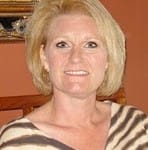The idea that some eating is emotionally driven is not new, but experts suggest that when the emotional component leads to unhealthy over-eating, it could be a sign of mental or emotional dysfunction. Some experts have gone as far as creating an emotional eating spectrum for gauging how strongly feelings influence food choices. Most professionals expect the newest diagnostic and statistical manual of mental health (DSM-V) to give definite criteria for determining when a person’s over-eating has become dysfunctional. On one end of the proposed spectrum food is used to create a feeling of sensory gratification. Most of us experience this level of emotionally driven eating. We find pleasure in eating foods that taste good to us. We aren’t over-eating, but we are making a food choice based on the pleasure we will feel as we eat that food. Dieters who choose to reward themselves with an off-limits food do so because there is a positive feeling associated with eating that food. Sometimes a person may use food as a motivator to complete unpleasant work. Promising yourself a milk shake once you complete a research paper or going out for pizza after a day of housework are examples of reward motivated eating. Comfort food is next on the spectrum. This describes the decision to eat a particular food because of conscious or unconscious associations. Eating mashed potatoes, for example, may remind us of mother and home and we feel comforted just by eating them. We are driven by an emotional desire for comfort when we feel under stress or lonely. At this point we are looking to soothe ourselves with food or are attempting to capture loving feelings that we connect with a particular food item. Sometimes we eat to avoid bad feelings rather than as a way to create good feelings. On the spectrum of emotional eating, distraction marks a shift toward escaping negative emotions as opposed to eating in order to embrace positive emotions. One step further is the use of food to numb or silence nagging feelings. This is using food as sedation. The danger here is that people who use food in this way may continue eating in an attempt to escape bad feelings. However, by over-eating the person instead creates new negative emotions like guilt and self-loathing. Soon there is a negative cycle of overeating to numb bad feelings which in turns creates more bad feelings. The far end of the spectrum is represented by punishment. At this stage the person is eating out of definite anger. The person may consume hefty amounts in an effort to lash out against themselves. Angry or frustration-driven eating may lead a person to choose foods that require strong mastication (crunchy or chewy foods). Here the person is using food to act out feelings that he/she is not ready to confront in a more direct way. According to research, most non-hungry eating is driven by either procrastination or boredom. However, dysfunctional eating which involves eating more than is considered normal in a short time span because of emotional drivers may soon be more clearly defined in the same way as are severely restricted eating disorders like anorexia and bulimia.
Call for Immediate Help:1.844.876.7680


